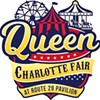Real City or Suburban Pipe Dreams?
Charlotte's future depends on how it sees itself
By David WaltersIt's a fair question, as we use several developments from Charlotte in the book to illustrate both good and bad examples of civic design. The book is published in the UK and has worldwide distribution, so the Queen City will find itself on the world stage, at least in a modest way. On the whole, the city comes out quite well. We write proudly of the vast improvement in Uptown and South End in the last decade, and note the regeneration of the historical "streetcar suburbs" like Dilworth, areas of which were degenerating slums 30 to 40 years ago.
But our answer to the question about the future of our urban region remains open-ended. That's partly because Charlotte's destiny truly is in the balance. It remains to be seen which of two powerful forces eventually prevail: the centripetal force of the transit corridors, gathering denser mixed-use development along linear spines focusing on Uptown -- or the centrifugal force of the outerbelt that pushes the city's suburban periphery further outwards, paving over farmland, mashing together surrounding towns, and creating one giant, sprawling megalopolis?
This is the great civic question of our time, and one of the reasons I have stayed here for 14 years is because Charlotte provides a fascinating urban laboratory to study these opposing forces. My professional opinion, based on 30 years' design work in cities, is clear. I unreservedly endorse the option that makes the best economic and environmental sense -- concentrating growth into more compact, transit-supported areas with high design standards and amenities while preserving surrounding landscape for the economic use and environmental protection of future generations.
Through ignorance or ideology, many oppose this view, and the fight for Charlotte's future is waged every day. But even as I campaign energetically for intelligent growth, being an Englishman from a different urban culture allows me a more detached, dispassionate perspective on Charlotte's successes and failures. From this vantage point, one key issue emerges as crucial to the question of the Charlotte's future: What is the image of the city? Or, put more prosaically, how does Charlotte see itself?
This is a surprisingly difficult question to answer. The most oft-quoted response by citizens describes Charlotte as "a city of trees." Well, it's certainly true we have plenty of trees, including a marvelous horticultural heritage in the older suburbs, but is this characteristic unique? Sadly, no. When I worked as a planning consultant in Atlanta, I asked citizens there the same question. Their answer? "Atlanta is a city of trees." In Raleigh it's the same story. Public meetings brought forth the identical mantra: "Raleigh is a city of trees."
These answers point to an obvious conclusion: In the South we display distinctly anti-urban preferences. In all the years I've worked in the region, few communities have defined themselves by reference to a building or buildings, and those that have are always smaller towns like Davidson, or Salisbury, with lively and active Main Streets, or Newton, with its courthouse square. In large cities, urban landmarks are usually ignored, rejected in favor of greenery.
This preference for nature over urbanity is one major impetus for our continued exodus to ever more distant suburbs -- a flight representing an impossible, doomed quest for nature, because the very nature we seek is destroyed by the act of building new suburbs, roads, office parks and shopping centers. We flee further and further out to escape the inescapable city, like hapless lemmings answering an intuitive, irrational call of nature.
Historically, American suburbs in the 19th century were the companion elements to the urban core; there was a clear, symbiotic relationship. By contrast, our modern 21st century suburbs are the antithesis of the city, able to exist without reference to the center. They're generic environments rather than specific or unique places because they're all built to the same development formulas that carve up the potentially rich experience of daily life into bland, separated segments where we undertake one task at a time, always in the company of others following the same routine -- be it shopping, working, worshipping or whatever. The rich collage of city life with its overlapping, polyphonic rhythms is dissipated into shallow one-note rituals that lose their meaning, loosening the bonds of true community.
The answer to the question about the future of Charlotte ultimately hinges on how we see our city. Is it an urban area with distinct character, enriched by contrast with true, conserved nature? Or are we trapped in a deepening spiral of diminished expectations, building ever-wider rings of generic development, lost in a fruitless quest for the Holy Grail of a little house on the prairie that can never be?
Speaking of News_walters.html
-
So Long And Thanks For All The Fish
May 25, 2005 -
Repairer of the Breach
May 18, 2005 -
Dilworth Drama Redux
May 11, 2005 - More »
Latest in David Walters
More by David Walters
-
So Long And Thanks For All The Fish
May 25, 2005 -
Repairer of the Breach
May 18, 2005 -
Dilworth Drama Redux
May 11, 2005 - More »
Calendar
-

Queen Charlotte Fair @ Route 29 Pavilion
-

NEW WINDOW GALLERY-Pat Rhea-ACRYLIC PAINTINGS-April 05-30 2024 VALDESE, NC 28690 @ New Window Gallery/Play It Again Records
- Through April 30, 12 p.m.
-

TheDiscountCodes
-

Wine & Paint @ Blackfinn Ameripub- Ballantyne
-

Face to Face Foundation Gala @ The Revelry North End






